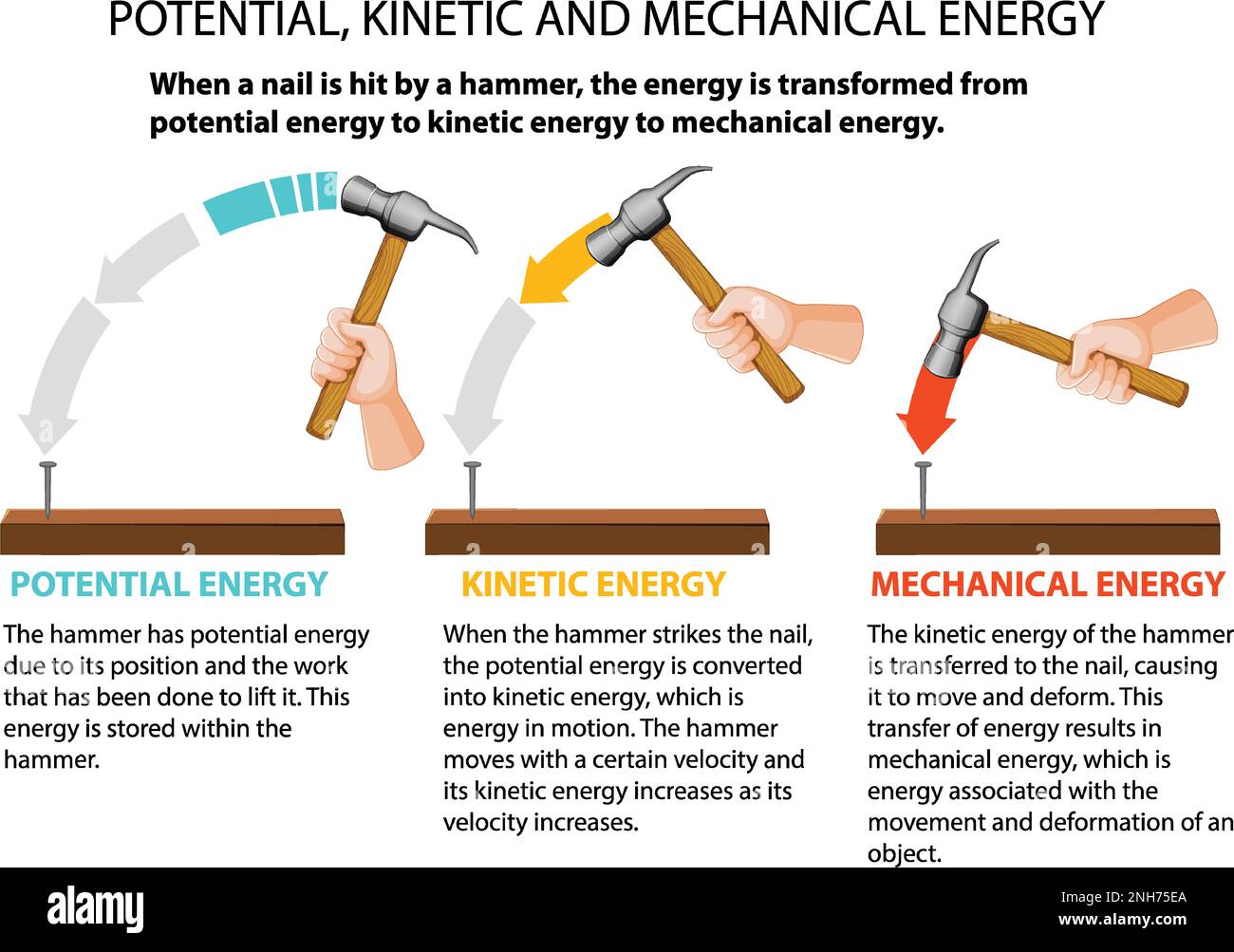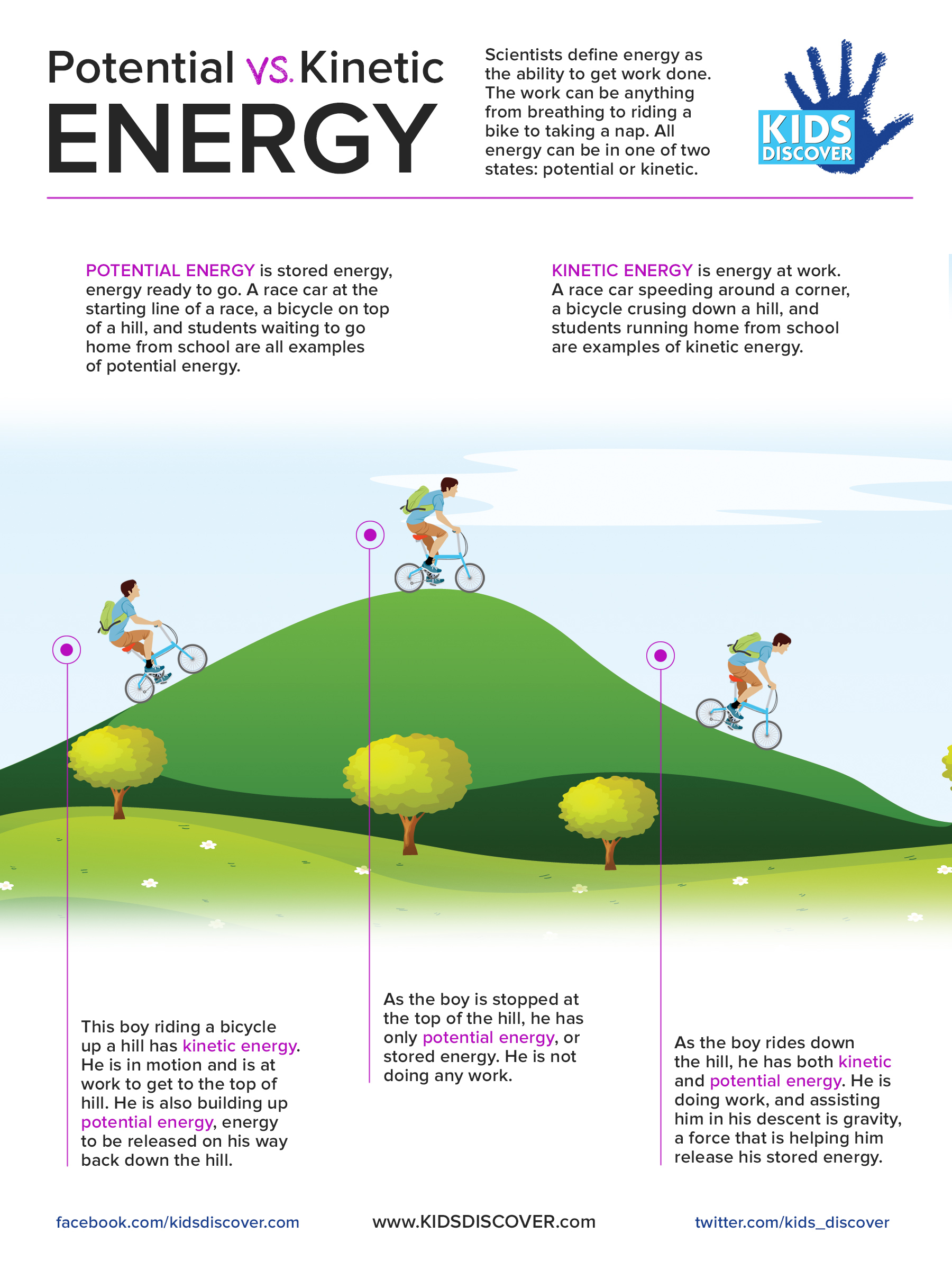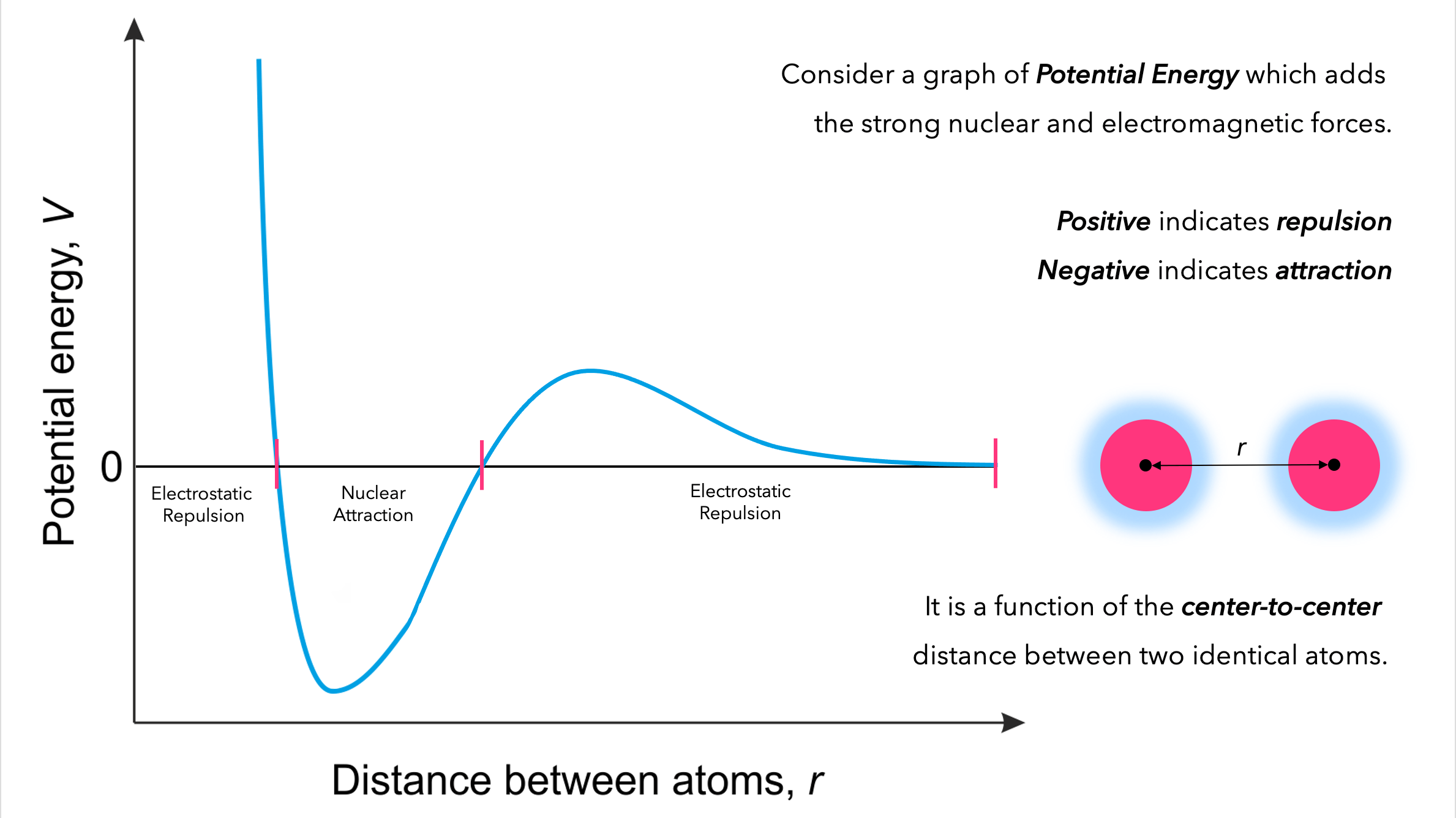First Class Tips About What Is The Difference Between Potential Energy And Force

Unraveling the Mystery
1. The Core Concept
Ever felt that pent-up energy before a big presentation or a challenging workout? That, in a way, is similar to potential energy. Think of it as stored energy, waiting for the right moment to unleash itself. It's the energy an object has because of its position or condition. A stretched rubber band, a book perched on a high shelf, or a compressed spring all possess potential energy. They're just sitting there, ready to do something.
Potential energy isn't a force itself; it's the capacity to exert a force and cause motion. It's like having money in the bank. The money isn't actively being spent (a force being applied), but it's available to be spent when needed. Similarly, that book on the shelf isn't falling (exerting a force), but it could fall, and the potential to fall represents its potential energy.
We often talk about two main types of potential energy: gravitational and elastic. Gravitational potential energy depends on an object's height and mass — the higher and heavier it is, the more potential energy it has. Elastic potential energy, on the other hand, is found in deformable objects like springs and rubber bands. The more you stretch or compress them, the more energy they store.
So, next time you see a roller coaster car at the top of the first hill, remember it's brimming with gravitational potential energy, just waiting to transform into thrilling motion. Its the quiet before the storm, the anticipation before the action!
2. The Core Concept
Alright, let's shift gears to force. Force, in its simplest form, is a push or a pull. It's what causes a change in an object's motion. If something is accelerating, decelerating, or changing direction, a force is at play. Think of pushing a shopping cart, kicking a soccer ball, or even just sitting in a chair (gravity is pulling you down, and the chair is pushing you up!).
Forces are vector quantities, meaning they have both magnitude (how strong the push or pull is) and direction. You can't just say you're applying a force of 10 Newtons; you have to say you're applying a force of 10 Newtons to the right, or downwards, or at some other specified direction.
Forces are responsible for all sorts of everyday phenomena. Gravity keeps us grounded, friction slows things down, and tension holds things together. There are many different types of forces, including gravity, friction, tension, normal force, applied force, and more.
Consider a classic tug-of-war. The two teams are applying forces on the rope in opposite directions. The team that applies the greater force will pull the other team towards them, demonstrating the power of force in action. No forces, no motion! It's that simple.

Key Differences Between Potential Energy and Force
3. Potential Energy is Stored, Force is Active
The most fundamental difference lies in their nature: Potential energy is stored energy, a latent capacity, while force is an active interaction. Potential energy is the potential to do work, while force is the action that performs work. Its like the difference between a loaded slingshot (potential energy) and the act of firing the pebble (force).
Think about it this way: A battery has potential energy. It's just sitting there, full of chemical potential, until you plug it into something. The flow of electricity from the battery, which powers your device, involves forces that cause the electrons to move.
Another good example is a drawn bow and arrow. The archer has invested energy to pull back the bowstring, storing it as elastic potential energy. When the archer releases the string, the potential energy is converted into kinetic energy, and the bowstring exerts a force on the arrow, propelling it forward.
Essentially, potential energy sets the stage, and force gets the show on the road! The potential is the promise, and the force is the delivery.
4. Force Causes Change, Potential Energy Can Be Constant
A key role of force is to cause a change in an object's motion. Whether its acceleration, deceleration, or a change in direction, force is always involved. Potential energy, on the other hand, can remain constant if the conditions don't change. That book on the shelf has potential energy, but it's not actively doing anything until, say, a cat knocks it off.
Imagine a rock sitting at the edge of a cliff. It possesses a considerable amount of gravitational potential energy, but as long as it remains perched there, this potential energy remains constant. However, the slightest nudge, a small force applied, can send it tumbling down, converting that potential energy into kinetic energy.
Consider a spring compressed between two blocks. The spring holds elastic potential energy, but if the blocks remains fixed, the energy is stored. However, if one of the blocks removed, a force will exerted on the remaining block that create movement and the potential energy will be released.
So, while force is all about dynamics and change, potential energy can be a more passive player, patiently waiting for its moment to shine.

SOLUTION Relationship Between Force And Potential Energy In A Uniform
How Potential Energy and Force Interact
5. Potential Energy Can Give Rise to Force
Potential energy is not entirely separate from force; in fact, it's often the source of a force. When potential energy is converted into kinetic energy, a force is typically involved. This is a crucial relationship to understand.
Consider a stretched spring. It has elastic potential energy. When you release the spring, it exerts a force on whatever is attached to it, causing it to move. The amount of force exerted is directly related to the amount of potential energy stored in the spring.
Another excellent example is gravity. An object's gravitational potential energy is directly related to the gravitational force it experiences. The higher the object is, the more potential energy it has, and the stronger the gravitational force acting on it is (although the force doesn't change just because the object is higher; it's a constant force field).
In many physical systems, the potential energy landscape dictates the forces that will act. Think of a ball rolling down a hill. Its path is determined by the shape of the hill, which represents the potential energy field. The force of gravity pulls it downwards, following the path of least potential energy.
6. Force Can Change Potential Energy
The relationship between potential energy and force isn't just a one-way street. Force can also change the potential energy of a system. By doing work on an object, a force can increase its potential energy.
Think about lifting a heavy box onto a shelf. You're applying a force against gravity, and in doing so, you're increasing the box's gravitational potential energy. The work you do in lifting the box is stored as potential energy.
Similarly, when you compress a spring, you're applying a force that deforms the spring, storing energy as elastic potential energy. The more you compress it, the more potential energy you store, and the more work you have to do to compress it further.
Essentially, force can be used to "charge up" a system with potential energy, like winding up a toy or pulling back a slingshot.

Real-World Examples
7. The Roller Coaster
Roller coasters are a fantastic example of the interplay between potential energy and force. At the beginning, the coaster car is slowly hauled to the top of a large hill. During this ascent, the motor is doing work against the force of gravity. As the car gains altitude, its gravitational potential energy increases dramatically.
Once the car crests the hill, the potential energy begins to convert into kinetic energy as the car plunges downwards. The force of gravity, combined with the track design, causes the car to accelerate. The higher the initial hill, the more potential energy the car starts with, and the faster it will go during the descent.
Throughout the ride, potential and kinetic energy are constantly being exchanged. The car slows down as it climbs smaller hills (converting kinetic energy back into potential energy) and speeds up as it goes down (converting potential energy back into kinetic energy). Friction also plays a role, gradually dissipating energy as heat.
The roller coaster is a perfect demonstration of how potential energy can be stored and then converted into motion through the action of forces. It is also a reminder of how energy can be transformed and conserved (though some is always lost to friction).
8. Archery
Archery provides another clear example. When an archer pulls back the bowstring, they are doing work to store elastic potential energy in the bow. The more the string is pulled back, the more potential energy is stored.
Upon release, the bowstring snaps forward, exerting a force on the arrow. This force accelerates the arrow, converting the potential energy of the bow into the kinetic energy of the arrow. The arrow then flies towards the target, its motion governed by the forces of gravity and air resistance.
The archer's skill lies in controlling the amount of potential energy stored in the bow and aiming the arrow so that the forces acting on it result in a precise trajectory. It's a subtle dance of energy and force, requiring both strength and finesse.
The accuracy of the shot depends on how efficiently the potential energy of the bow is converted into the kinetic energy of the arrow, and how well the archer accounts for external forces like wind.

Potential Vs Energy Diagram
FAQ Section
9. Q
A: Nope! Potential energy is stored energy, the capability to exert a force. Force, on the other hand, is the actual push or pull that causes motion or deformation.
10. Q
A: Absolutely! Think of a book sitting on a shelf. It has gravitational potential energy because of its height, but it's not actively falling. It's just waiting for something to happen (like someone bumping the shelf).
11. Q
A: They're deeply connected! Potential energy is often converted into kinetic energy through the action of a force. The roller coaster is a great example: Potential energy at the top of the hill turns into motion (kinetic energy) as gravity pulls the car down.
